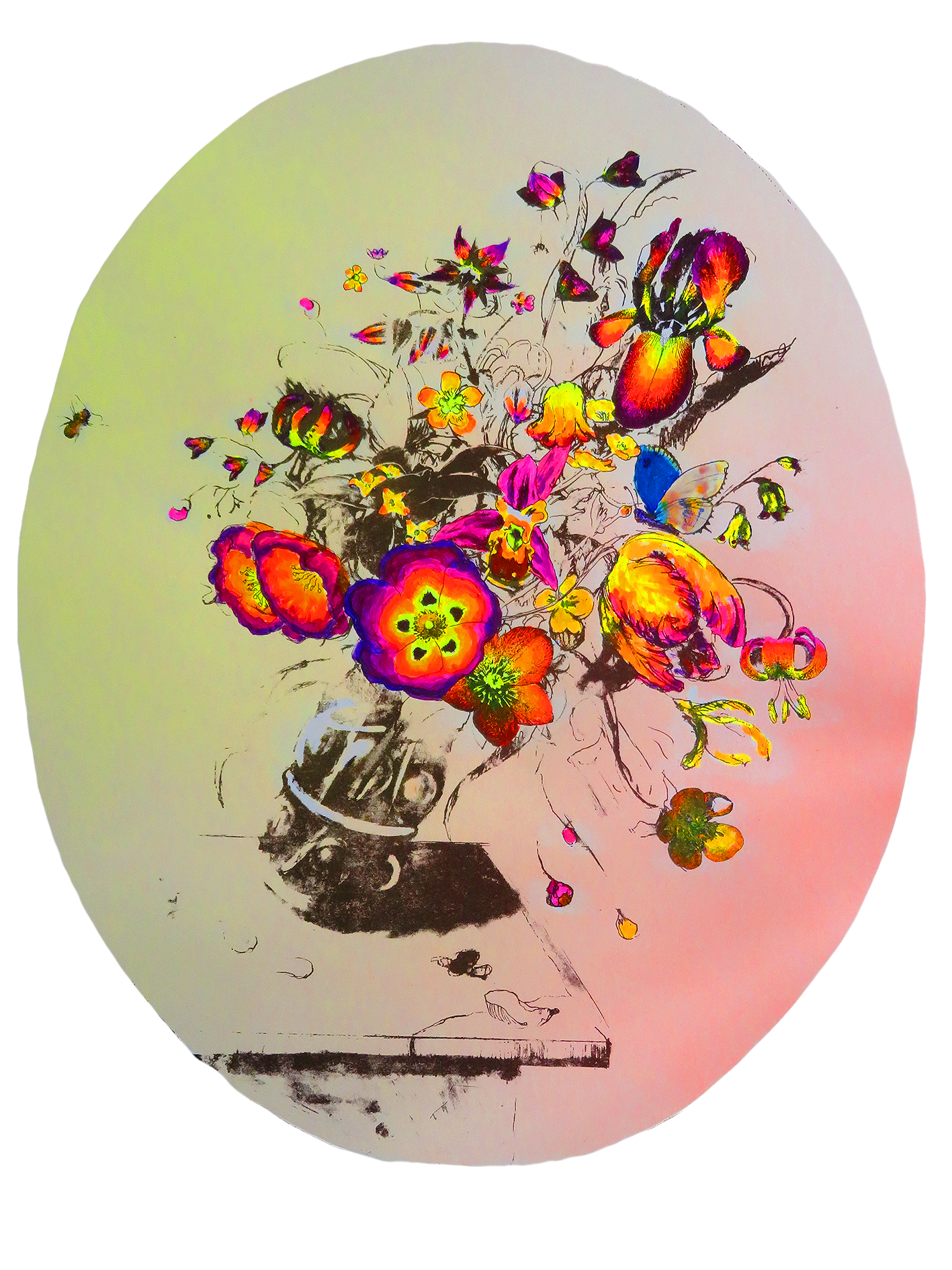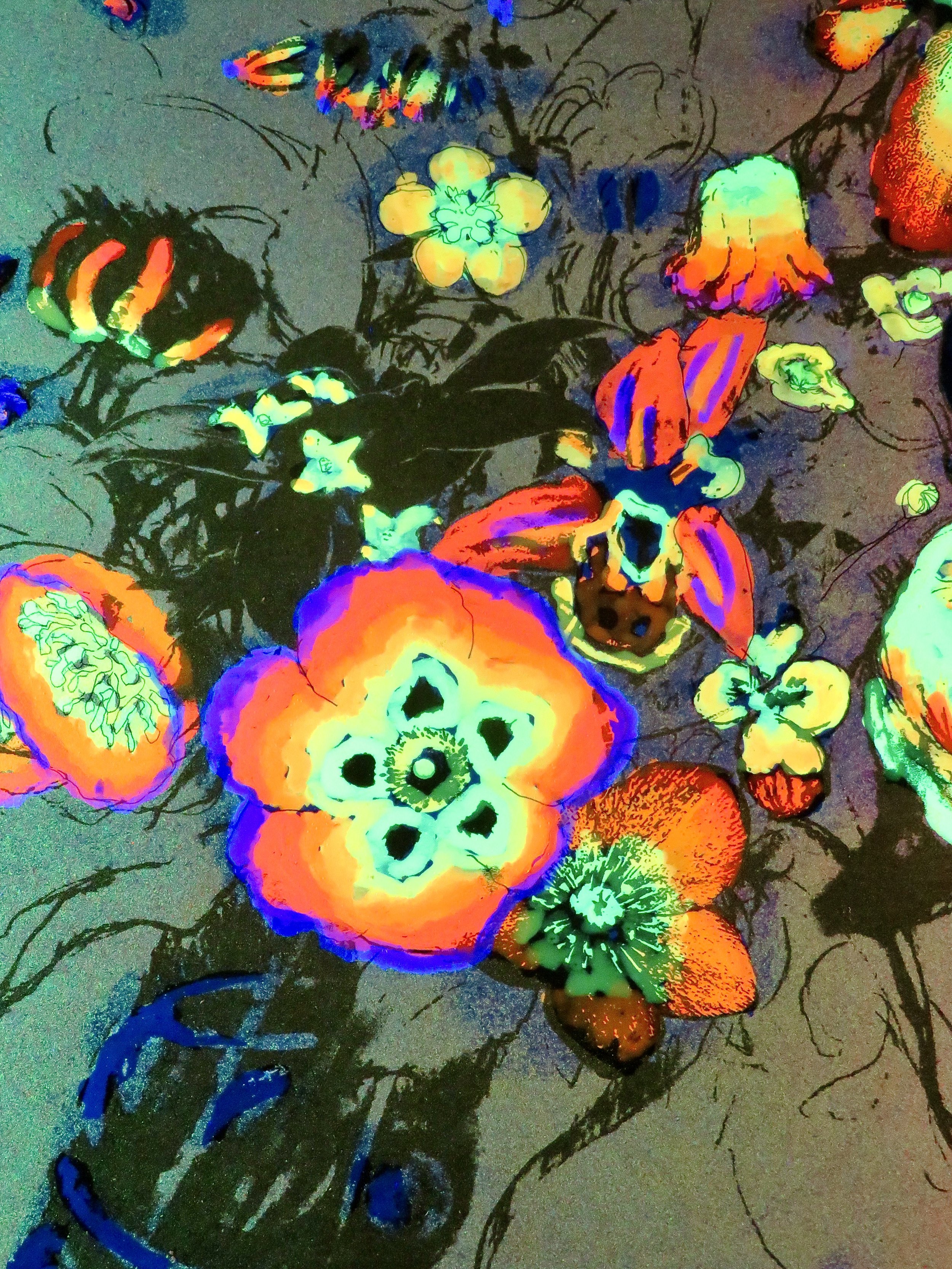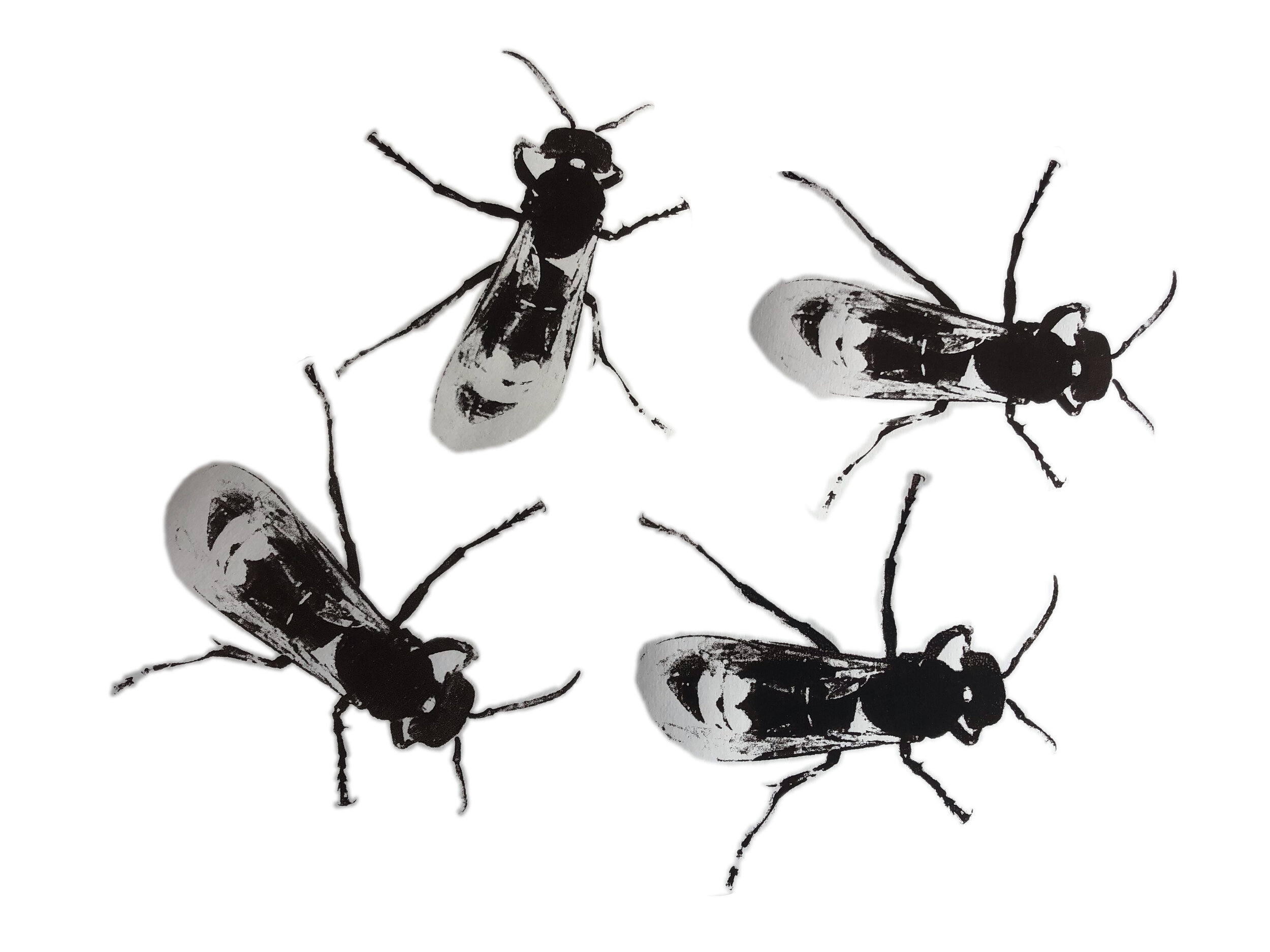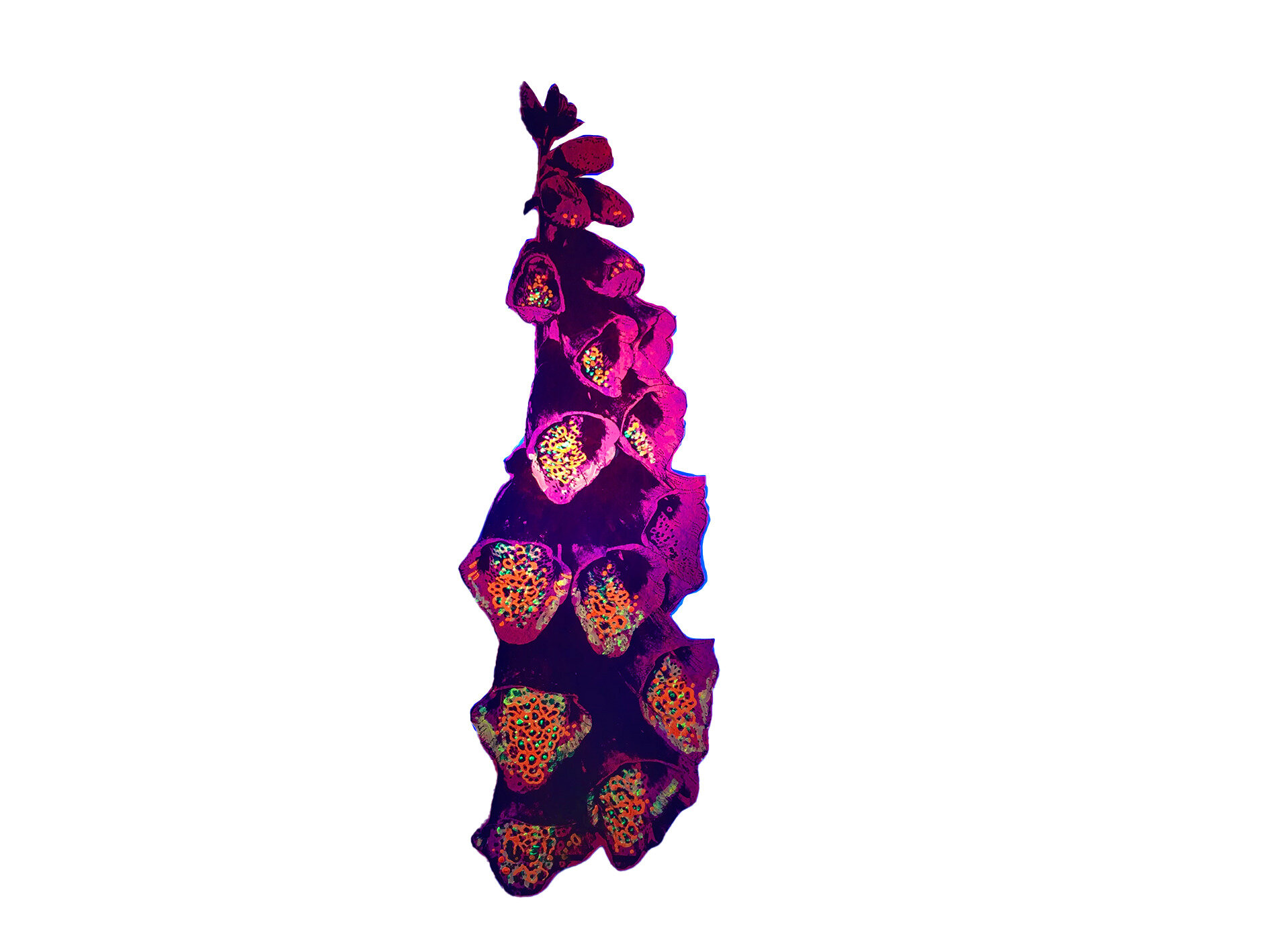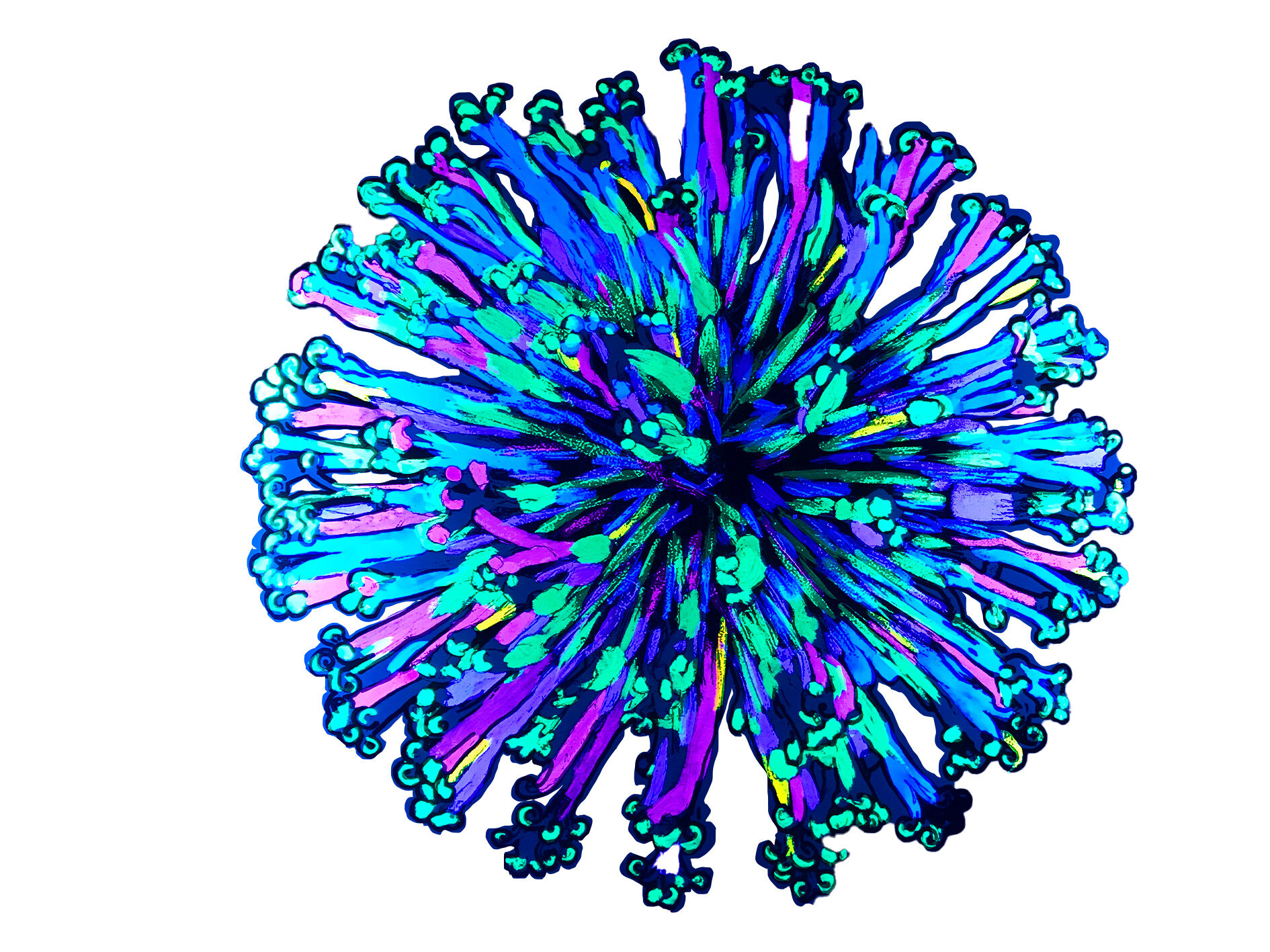Displays Decoded: The Multi-sensory Language of Flowers
at the University of Bristol Botanic Garden (The Holmes, Stoke Park Road, Stoke Bishop, Bristol)
July - October, 2021
Plummeting Perfumes (114cm x 84cm)
Displays Decoded: The Multi-sensory Language of Flowers.
Art and science exhibition, July - October, 2021
Alex is very excited to open her innovative exhibtion this summer at the University of Bristol Botanic Garden. The exhibition incorporates pioneering plant science research with interactive artwork created through a variety of media, including augmented reality (AR). Alex is looking forward to welcoming both students and visitors to discover the fascinating relationship between pollinating insects and flowers!
Nick Wray, curator of the Botanic Garden, said ‘as a team we have been working closely with Alex and Dave, we are excited to be hosting this exhibition, which will allow people to experience the complex and multi-layered ways by which pollinators interact with flowers’.
Recent research by scientists at the University of Bristol, led by Biologist Dr. Dave Lawson, is revealing previously undiscovered ways in which pollinators are attracted to and interact with plants. This research is happening at a time when insect populations continue to decline. Pollinators are attracted to flowers in several different ways, which are collectively known as ‘sensory modalities.’
Dr. Lawson’s research focuses on hidden aspects of floral displays and the effects that these display components have on foraging pollinators.
Inspired by this research, with interactive sculptures, ultra-violet prints and heat sensitive materials, Alex’s artwork demonstrates some of the principle modalities: scent, UV light and colour patterns, static attraction, and the cellular structure of the flowers themselves.
By Varying Degrees - heat sensitive, interactive piece (thermochromic ink)
One of the exhibition spaces - Botanic Garden Rondavel
Her work re-constructs 17th century Dutch flower paintings from the Broughton Collection at the Fitzwilliam Museum in Cambridge in a series of prints called ‘Tipping Point,’ with vases toppling over to reflect today’s global ecological crisis. Other aspects of her work are more interactive, inviting visitors to experience for themselves how bees and other pollinators sense static from flowers, or are affected by a flower’s scent.
Previously artist in residence at The Royal Parks in London, where she exhibited in St James’s Park, Alex’s focus has long been on portraying the scientific relationship between pollinators and flowers in her art.
When asked about the art and science exhibition, Dr. Lawson said ‘Certain aspects of floral displays are obvious to us as humans, such as scent and vision, but there are many avenues of communication employed by flowering plants that are hidden to us. It’s so exciting to be working alongside Alex Hirtzel and the Botanic Garden on a project that reveals these hidden facets of floral displays to a wider audience’.
Please view the official statement released by the University of Bristol Botanic Garden here, and sign up to keep in touch with Alex below.
Below are some of the images being displayed in one of the exhibition spaces, interacting with UV light:




